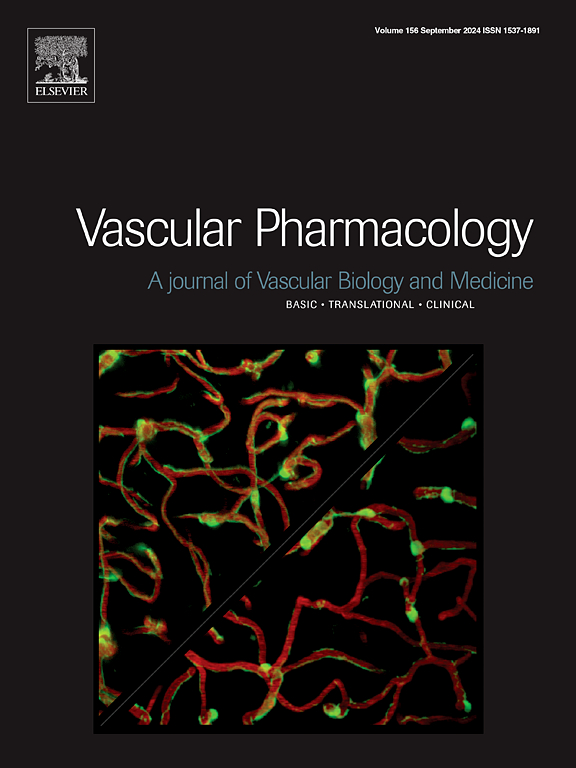单细胞RNA测序(scRNA-seq)及其对动脉粥样硬化细胞异质性的见解。
IF 3.5
3区 医学
Q2 PHARMACOLOGY & PHARMACY
引用次数: 0
摘要
单细胞RNA测序(scRNA-seq)改变了我们对人类生物学中细胞多样性的理解,为疾病机制提供了新的见解。在心血管疾病(CVD)中,scRNA-seq能够精确定位复杂的细胞群,揭示影响疾病进展的独特细胞类型和状态,并提出新的治疗靶点。在动脉粥样硬化(AS)中,scRNA-seq通过识别不同的细胞类型重新定义了斑块病理学,包括内皮细胞(ECs)、平滑肌细胞(SMCs)、成纤维细胞、巨噬细胞、T细胞和B细胞,每种细胞在斑块稳定性、炎症和疾病进展中都有特定的作用。在我们的综述中,我们总结了这些主要的细胞群及其在非病变和动脉粥样硬化主动脉中的细胞异质性,并通过小鼠和人体组织的scRNA-seq鉴定。我们讨论了保守的和物种特异性的亚群,它们的定义标记,以及它们在斑块进展中的功能意义。此外,我们将scRNA-seq研究结果与实验研究相结合,以突出具有治疗潜力的关键分子靶点。在未来,这些见解提供了一个精细的动脉粥样硬化的细胞和分子框架,并可能有助于开发有针对性的干预措施,以促进斑块稳定和降低心血管风险。本文章由计算机程序翻译,如有差异,请以英文原文为准。

Single-cell RNA sequencing (scRNA-seq) and its insights into cellular heterogeneity in atherosclerosis
Single-cell RNA sequencing (scRNA-seq) has transformed our understanding of cellular diversity in human biology, providing novel insights into disease mechanisms. In cardiovascular disease (CVD), scRNA-seq enables precise mapping of complex cell populations, uncovering unique cell types and states that influence disease progression and suggest new therapeutic targets. In atherosclerosis (AS), scRNA-seq has redefined plaque pathology by identifying distinct cell types, including endothelial cells (ECs), smooth muscle cells (SMCs), fibroblasts, macrophages, T cells, and B cells, each with specific roles in plaque stability, inflammation, and disease progression. In our review, we summarized these major cellular populations and their cellular heterogeneity in non-diseased and atherosclerotic aorta, as identified by scRNA-seq in mice and human tissues. We discussed conserved and species-specific subpopulations, their defining markers, and their functional implications in plaque progression. In addition, we integrated findings from scRNA-seq with experimental studies to highlight key molecular targets with therapeutic potential. In the future, these insights offer a refined cellular and molecular framework of atherosclerosis and may help the development of targeted interventions to promote plaque stabilization and reduce cardiovascular risk.
求助全文
通过发布文献求助,成功后即可免费获取论文全文。
去求助
来源期刊

Vascular pharmacology
医学-药学
CiteScore
6.60
自引率
2.50%
发文量
153
审稿时长
31 days
期刊介绍:
Vascular Pharmacology publishes papers, which contains results of all aspects of biology and pharmacology of the vascular system.
Papers are encouraged in basic, translational and clinical aspects of Vascular Biology and Pharmacology, utilizing approaches ranging from molecular biology to integrative physiology. All papers are in English.
The Journal publishes review articles which include vascular aspects of thrombosis, inflammation, cell signalling, atherosclerosis, and lipid metabolism.
 求助内容:
求助内容: 应助结果提醒方式:
应助结果提醒方式:


